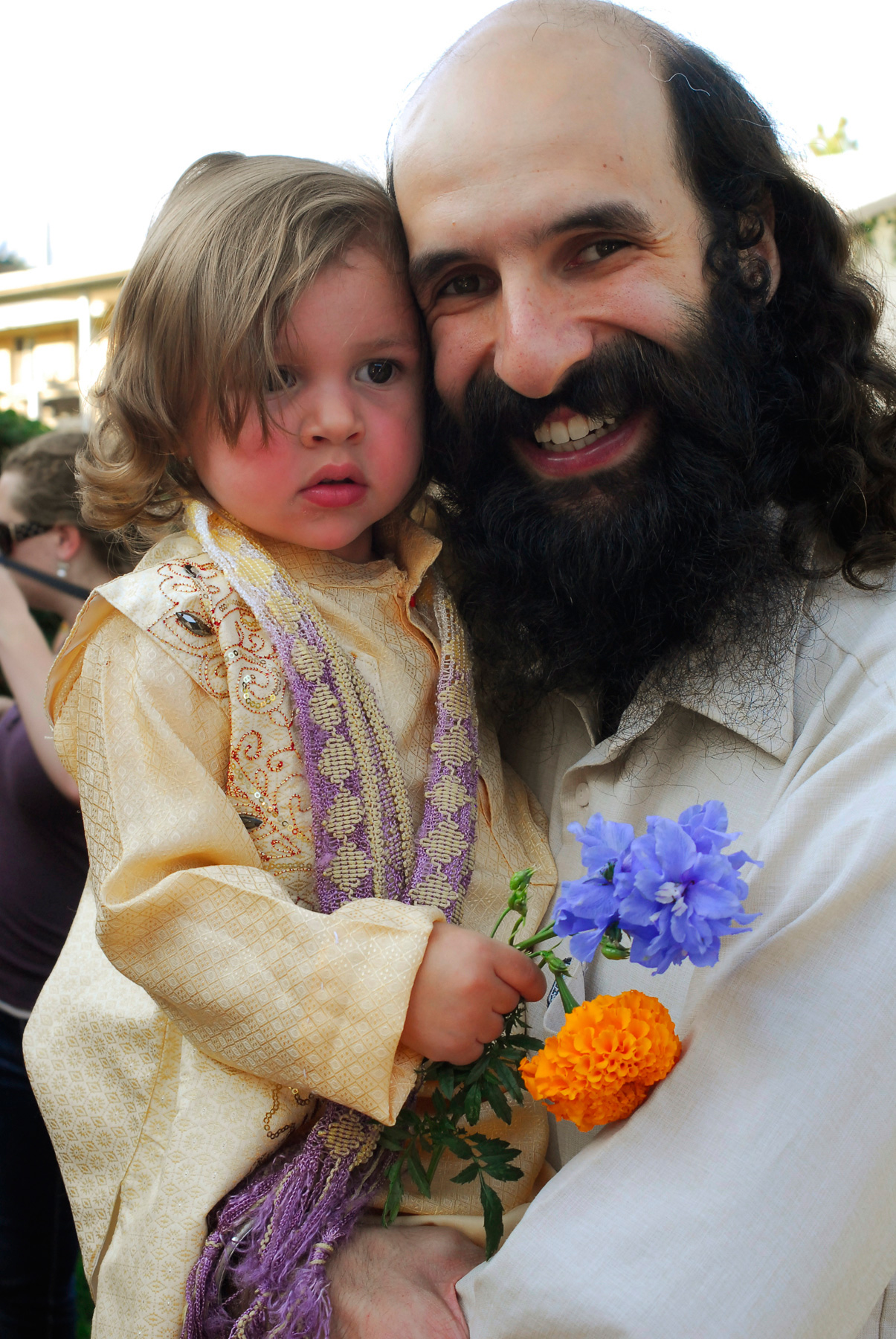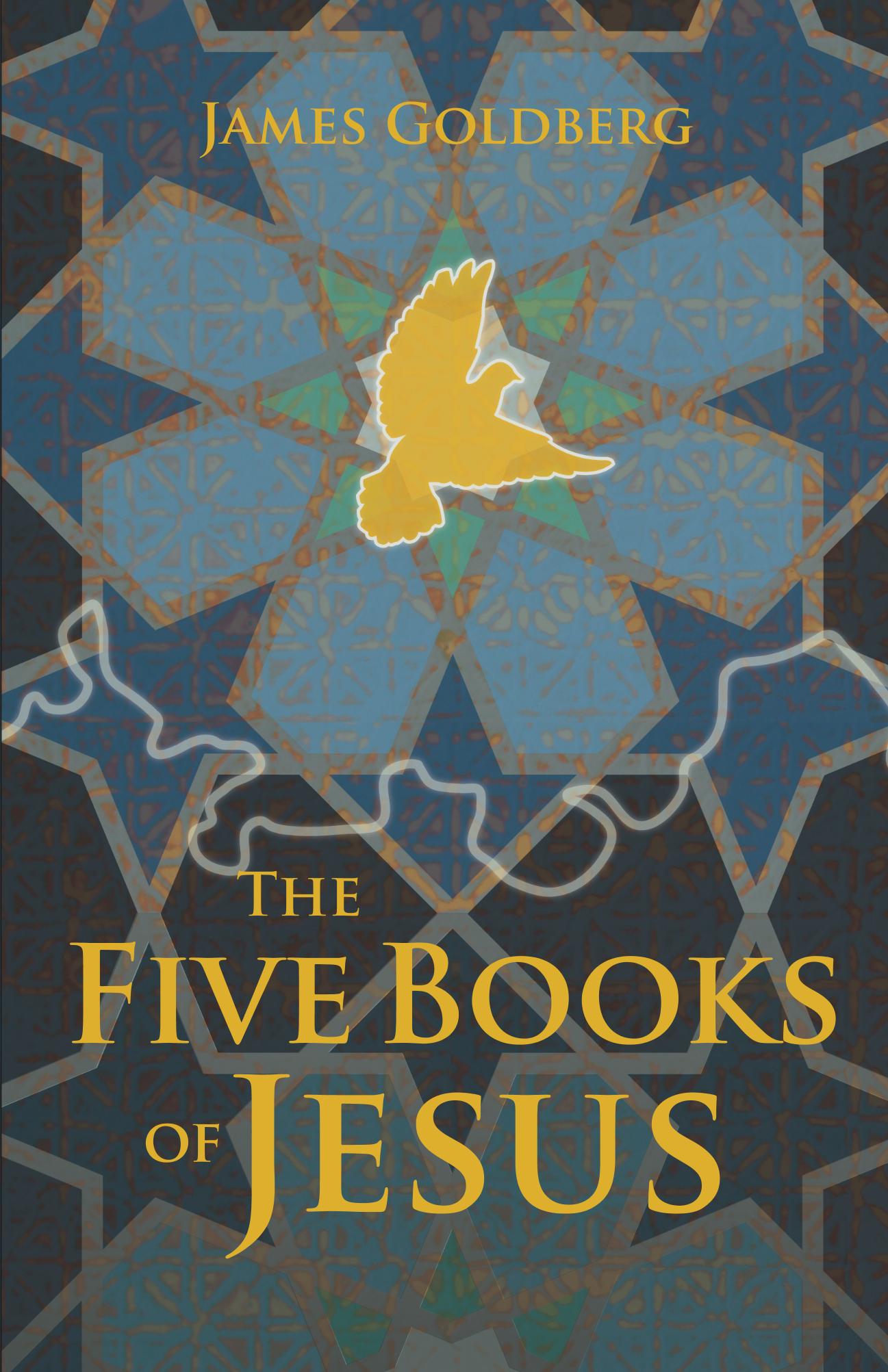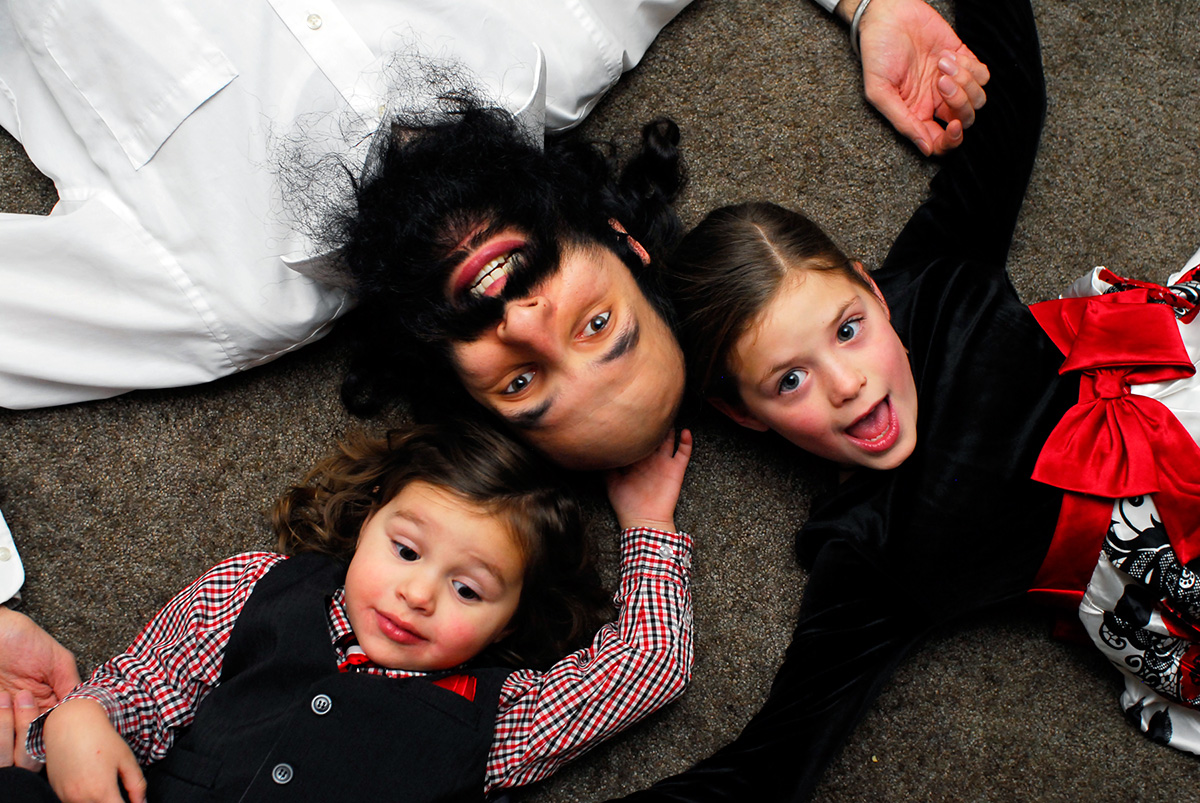James Goldberg

You last spoke with Mormon Artist in 2008. Let’s talk about the last five years—give us an update on your life.
Well, I traded a theater company for a family. Back then, most of my energy and passion went into the grand experiment of the New Play Project. Now the most important part of my life is being a husband and father of three.
It’s interesting: when I was younger, a lot of my sense of value was based in my potential. I figured I mattered because of all the things I might accomplish down the road. Over the past five years, I’ve started thinking of my life more in terms of a few commitments than in terms of those possibilities. My sense of value is based much more on my little everyday efforts to contribute.
In some ways, those everyday obligations to family and community put a strain on my writing. I can’t be as obsessive about my work anymore. At the same time, though, my everyday obligations can be very grounding. In this transient century, we need writers who can speak from a fierce sense of belonging.
And you’ve managed to keep writing, even with all these changes. Can you also give us a brief update on that?
Sure. Last time we talked, the New Play Project had just produced my play Prodigal Son, about a son who strays from his father’s atheism into Mormon faith. It went on to win that year’s AML (Association for Mormon Letters) Drama Award.
My recent novel The Five Books of Jesus, which retells the story of the gospels in vivid cultural context, won the 2012 AML Novel Award. In the 36-year history of the awards, I’m the first person to have won in both those genres.
Between the two, I published several essays and short stories and even a bit of poetry. Most—but not all—of my work has dealt with Mormon, Sikh, or Jewish themes. For my Creative Writing Master’s thesis, I also developed three blogs and wrote a series of reflections on blogging called Drink Me, or: How I Learned to Stop Worrying and Love the Blog. It’s organized around old Alice in Wonderland illustrations and is one of the few master’s theses I know you can read for fun—if “very strange” falls into your definition of fun.
Tell us a little bit more about your experience in BYU’s MFA program. Did you find that creativity is, in fact, something that can be taught?
Absolutely. I mean, every human being already has a lot of raw creativity, but you can practice asking the sorts of basic questions that help generate ideas, and you can sharpen your ability to distinguish between the best ideas and the rest. You can definitely study how meaning is created in a reader’s mind and get better at guessing what consequences your writing choices might have. People in advertising and public relations study these sorts of things all the time: essayists, poets, and novelists are aiming for deeper reactions, but surely their craft can also be studied.
When we call something “creative,” we often just mean that someone put an unexpected twist on a familiar idea. It’s not magic when you do that—it’s a skill.
MFA programs don’t necessarily focus on sharpening creativity, of course. Some classes will be focused on learning the conventions of a certain genre. Some follow a workshop format that can become unproductive if other members are asking you to conform to their expectations instead of viewing your work in terms of its own goals and audience. But it’s definitely possible to get better as a writer through training.
You can start that training informally before actually enrolling in any classes, of course. For anyone who’s interested in fiction, I’d highly recommend Orson Scott Card’s book Character and Viewpoint as a starting point.
And I’d strongly recommend working with audiences in some form before you consider an MFA. People who come in with a sense of purpose tend to get more out of programs than people who are coming in trying to find their artistic identities. That’s part of why New Play Project was so important to me—it gave me and other writers a lot of experience with audience to help shape our future writing.
What has happened with the New Play Project since 2008?
We hit a point in 2009 or so when most of the key members moved on at the same time—to grad schools or out-of-state jobs or parental obligations that made rehearsal schedules tougher. My oldest daughter is from my wife’s first marriage, and I personally felt like having evenings home with her was more important than my love for the New Play Project.
The leaders who stayed switched from our old model of constantly producing short play festivals to a lower-key model of organizing an occasional reading of a full-length play. It’s still a helpful resource for playwrights, but doesn’t have the same strong sense of community anymore. Nurturing communities is a lot of work.
In a way, though, I’m still working in a more limited way on the core goals that led Ari Rivera and me to found the New Play Project in 2006. I am working to be a writer whose work resonates with religiously committed people and helps others see past stereotypes to get a feel for what religiously committed life is like. It’s also important for me to help other writers with overlapping goals and to celebrate their progress.
I still love Mel Leilani Larson’s work and it’s been great to see her plays so popular with audiences here, as well as getting productions at colleges with other religious sponsors. It’s been great to hear about Katherine Gee Perrone’s work with a children’s theater in Texas. I’ve also enjoyed working with poets, short story writers, and essayists through the Mormon Lit Blitz contests I’ve coordinated and last fall’s Four Centuries of Mormon Stories contests. And I held a master class and writing retreat for literary-minded Mormon writers this summer. As long as I’m in Utah, I’d love to hold one of those each year.
Gideon Burton, a BYU English professor with a background studying the Renaissance, once pointed out that the classics we remember from that era developed from a lot of forgotten failed experiments. But it was the permission artists gave themselves to go out on a limb and risk failure—and the support patrons gave them in the process—which ultimately allowed so much great work to bloom.
I still believe that writers and artists need good places to come where they can experiment and reflect and improve. Five years ago, my work at the New Play Project was my contribution to that cause. Now, I’m making time for the online contests and retreats. When I’m a little more established economically, I’ll be able to contribute more in that way. There’s a season for everything.
Speaking of seasons and change, the Amazon blurb describes The Five Books of Jesus as a “lyrical novelization of Jesus’ ministry.” The novel is a new format for you, isn’t it? Why the switch from playwriting?
I’m a storyteller, and I use the format that’s best for the story. What happens in The Five Books of Jesus is largely taken from the gospels: the events won’t be terribly new to most readers. And while there is dialogue in the book, it’s hardly the heart of the story.
What I wanted to do with the gospel stories was to help immerse readers in the cultural world and recapture the surprise of Jesus’ ministry. To do that, I need to get readers into the heads of characters who interact with Jesus, to let you inhabit their assumptions.
I chose the novel form because perspective is one of the great strengths of the form. On stage, you could watch Andrew or Mary or Pilate. It’s easier in a novel to encourage you to see through their eyes.

Can you tell us a little bit more about The Five Books of Jesus? Why that title?
The “five books” part is a reference to the five books of Moses. In the author’s note, I describe the gospels as “boats that sail on the deep sea of the Hebrew Bible.” In addition to putting the characters in their historical world, I put the storytelling itself in tune with their textual world. My novel is actually split into five “books” which are somewhat parallel to their Biblical counterparts. Just like the gospels do, I often borrow Old Testament imagery to describe what Jesus and those around him do. If you know your Bible well, you’ll find a lot of echoes of Elijah in my book, for example. And echoes of the creation story, Jacob wandering in the desert, Pharaoh, judges like Gideon and Sampson, poetry from Isaiah, and so on. You don’t have to catch those layers to appreciate the novel, but they add a lot of richness if you do.
We’ve spoken before about your heritage—Jewish, Sikh, and Mormon. How did your specific roots help in writing your novel? Did they hinder in any way?
I don’t know if Sikhism is a big direct influence, but my grandfather’s childhood in rural Punjab before the Partition of India and Pakistan certainly informs my view of rural village life. You could say that I’m two or three generations instead of two thousand years from the basic kind of place Jesus came from.
Obviously, Jewish tradition is a big influence on my interest in exploring the gospels in cultural context. The Last Supper just plain makes more sense through the lens of a Passover Seder. The Christian Seders I’ve heard about tend to ruin that by skipping straight to the Jesus parallels without really getting the baseline of what Passover probably meant to his disciples first.
I think that whether a reader is Mormon or not, my Mormonism is actually a very beneficial influence. As a grad student, I worked on the Joseph Smith Papers Project and got a close historical look at the human tensions that came with an emerging faith. Because I’d seen that process in the 19th century, it was easier to imagine in human terms how Jesus might have alienated some people at the same time he electrified others. The Five Books of Jesus definitely gives weight to the perspectives of some of Jesus’ critics and enemies. And it takes time to show how following Jesus didn’t automatically put a person on the same page as him. Mormon history helped me take seriously the diversity of expectations and beliefs that must have existed in Jesus’ Kingdom of God movement.
And as if your pen weren’t already in enough pots, you also maintain three separate but connected blogs which grew out of your thesis. Why blogs? Why three of them?
I’m not really one to write just for writing’s sake. I’d way rather have a good conversation with someone. I go through the frustrating process of writing because I want to give something to my readers.
I went into grad school with a concentration in creative nonfiction, because I wanted to talk to readers about stuff that actually happened. But I never got into the modern literary essay, because I didn’t know anybody who sat down with their copy of Creative Nonfiction for fun or with the Hotel Amerika trans-genre issue for a conversation starter.
I’m not really an alpha consumer for new media: I didn’t have email until my junior year of high school or a cell phone until a year after my mission. I still use a cheap dumb phone at a time when plenty of people are reading my novel on their phone’s Kindle app. But blogging seemed like a great way to actually connect with people, and I had a lot of fun working with the form as a creative writer.
I created three blogs because I realized early that blogging is not just about the content in a given post, but also about the way the blog as a whole frames each post. Each blog is a different voice, a different way of thinking about the world, a different part of who I am and how I sometimes speak.

In our last interview, you said, “Creating and telling stories is a lot more than the writing part.” You’re obviously immersed in many different aspects of creating and telling stories. What advice can you give to those interested in pursuing writing as a way to give life to those stories—either as a hobby or as a career?
It’s obvious and the most repeated advice ever: If you want to write, you need to actually write. It doesn’t have to be perfect, but you do have to start.
You don’t need to finish a polished work for every idea you ever get. Just writing an outline or a few paragraphs can be great practice and help you as a writer even if the project isn’t worth all the time it would take to finish. You may be at a time in your life when you have excuses for not finishing things, but you ought to at least start some for the practice.
You should also probably practice telling stories. And pay close attention to what captures people’s attention and what loses it.
One final piece of advice: Most writing instruction focuses on the space between a concept for a work (e.g. “I’m going to write a novel about the people around Jesus”) to the finished product (The Five Books of Jesus). I encourage writers to spend more time thinking about what their motivating impulse is and what concepts might speak to that.
I’ll give you an example. When Hostess went bankrupt, I got interested in how leaders maintain or lose the support of their followers. I wrote a nonfiction blog post exploring the issue by comparing Hostess as a company with the rise of the House of Saud in the Arabian peninsula, but I also wrote a fantasy short story set in a world where employment agreements are made by covenant and slaves convene to choose their master’s fate when his end of the covenant is broken.
What’s next?
I’m collaborating on a graphic novel called The Campaign. The teaser for that is: “In a world where the Ottoman Empire never fell, seven brothers campaign for their dead father’s throne—and their own survival.” There’s a Facebook group where we post draft art and occasional updates.
I’m also working on some short stories and a young adult novel called The Occasional Bollywood Lovers’ Club about a Sikh girl and Mormon guy who fall for each other. The central idea there is that “love conquers all” might be scary if there are parts of your life you don’t want conquered. I guess you could say it’s like a flip side to Gurinder Chadha’s film Bend It Like Beckham.
We’ll see what gets done and how fast. I have a big paid freelance project coming up and may be switching to a more time-consuming (but stable) day job. And I’m a notoriously slow writer since I want the language itself to matter.
What do you think are the best ways to build communities of Mormon writers (or other artists)? You mentioned a Facebook group you’re using—what else?
Literary community, to me, is when people can use creative works as reference points in their conversations about other things. So we need to read each other’s works and find ways to talk about them that go beyond “this was good” or “I didn’t like this.” I tried to do that with the discussions for the last Mormon Lit Blitz. On my blog, I’ve mentioned books and stories I’ve read in posts about prophecy, suffering, and so forth. I can definitely do more, and probably should.
Just reading a magazine like Mormon Artist contributes in a real way by proving there’s an audience for discussions about Mormon literature and art. But I think we can go further in wards, on campuses, and in social media in particular.
And I think the payoff is worth it. One of the challenges facing the Mormon community now is that we’re often cast by the majority culture as hopelessly backward—and, worse yet, hopelessly boring/bland—and we all too often buy into that image. People get ashamed of Mormon identity and distance themselves from the community because they don’t feel like they have much to connect to.
From my perspective, art is a great way to combat that “great and spacious building” problem. Stories and sounds and images that engage the imagination can help people feel emotionally connected to their faith, and could help us reclaim Mormon identity from the prevailing stereotypes. Maybe that’s a crazy pipe dream, but I really believe that beauty matters in Zion. And that we can do more, so much more, to create and support it. ❧
